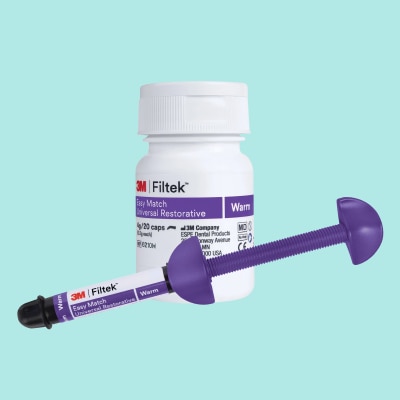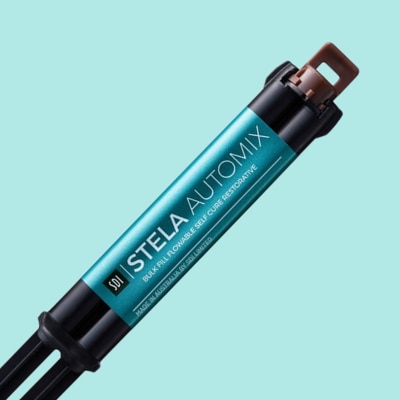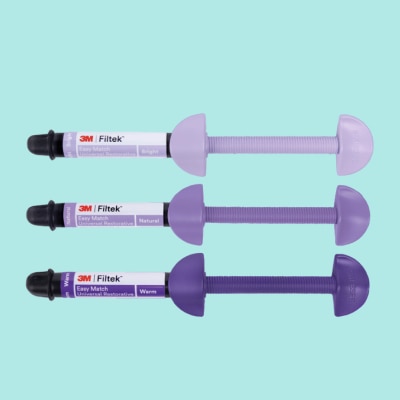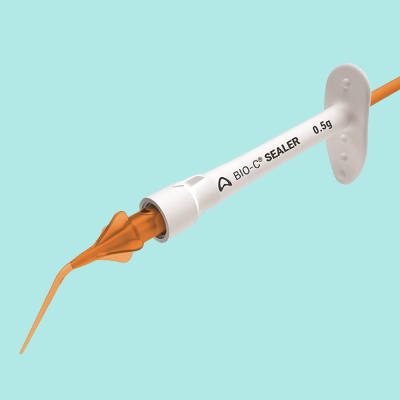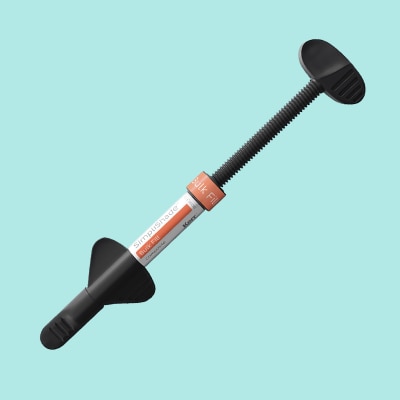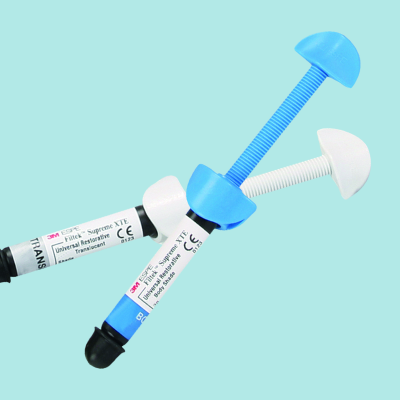Streamline Your Restorations
Venus Bulk Flow One from Kulzer is the first flowable one-shade bulk-filling composite that does not require the need for an additional composite capping layer. Its unique combination of physical properties makes it the ideal composite in cases with little patient compliance or time.
Don’t All Bulk Fill Flowable Composites Need a Capping Layer?
Most flowable bulk fills require an additional layer of conventional resin-based composite to cap the restoration. This is because flowable bulk fills have a lower viscosity (lower filler content) and therefore reduced wear resistance and hardness properties. For this reason, flowable bulk fill composites have come to be referred to as a bulk fill base. Venus Bulk Flow ONE removes the need for an additional capping layer because of its low shrinkage stress, high flexural strength and high wear resistance. These properties ensure durable restorations that withstand the high mastication loads at the back of the mouth.
Can Venus Bulk Flow ONE Still be Used With a Capping Layer?
Yes, Venus Bulk flow ONE can also be used with a capping layer in a traditional bulk fill base restoration technique. This might be advisable in big cavities or cusp placements. Using Venus Bulk Flow ONE without a capping layer is most beneficial in all clinical cases where a flowable viscosity is ideal during placement. This includes small cavities or those with tunnel preps, class III restorations with intact labial wall or class V restorations.
What is its Curing Depth?
Venus Bulk Flow ONE can be placed and cured in increments of up to 4mm inside a cavity.
What is a One-Shade Composite?

Is Venus Bulk Flow ONE Radiopaque?
Yes, Venus Bulk Flow ONE fillings are easily recognised on x-rays which supports a reliable diagnosis. Radiopacity has become an important and much-desired property to have in dental restoratives.
By showing up white on dental x-rays, radiopacity can help in the diagnosis of fractures, voids, over contouring, missing proximal contact, marginal imperfections, secondary caries and more. Venus Bulk Flow ONE's high radiopacity of more than 250% AL allows for a safe and predictable diagnosis.
How is Venus Bulk Flow ONE Presented?
Venus Bulk Flow ONE is available in the following packages:
- Venus Bulk Flow One Syringe 2g - 1x 2g syringe, 5x Cannulas
- Venus Bulk Flow One PLT 0.2g 20pk - 2x10x0.20g PLT
- Venus Bulk Flow One Value Kit Syringe 10pk - 10x2g syringes, 50 Cannulas, Pictorial card
- Venus Bulk Flow One Value Kit PLT 80pk - 80x0.20g PLT, Pictorial card
Where can I buy Venus Bulk Flow ONE?
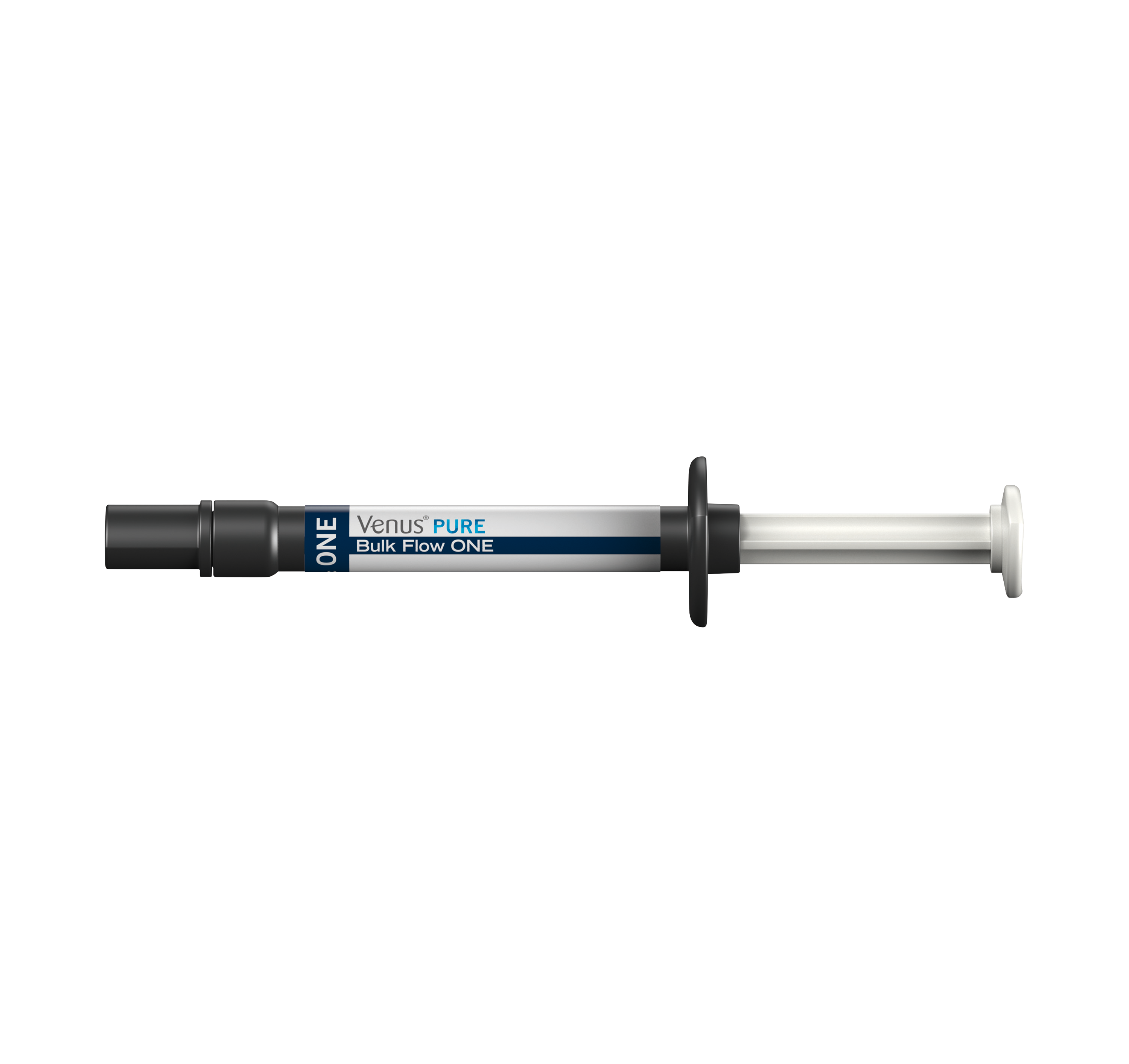
Venus Bulk Flow One Syringe 2g

Venus Bulk Flow One PLT 0.2g 20pk

Venus Bulk Flow One Value Kit Syringe 10pk

Venus Bulk Flow One Value Kit PLT 80pk
Where can I buy Venus Bulk Flow ONE?
A simple definition of CAD/CAM dentistry is the use of digital software to design and manufacture dental restorations and prostheses. CAD stands for computer-aided design and CAM stands for computer-aided manufacturing. The technology can be used to create crowns, dentures, inlays, onlays, bridges and veneers among other things. The speed of the CAD/CAM process allows for dental prosthetics to be designed, manufactured and delivered to the patient in quick time, sometimes the same day. The wider system of using computer assisted technologies to produce restorations is known as CEREC (Chairside Economical Restoration of Aesthetic Ceramics).

Venus Bulk Flow One Syringe 2g

Venus Bulk Flow One PLT 0.2g 20pk

Venus Bulk Flow One Value Kit Syringe 10pk




